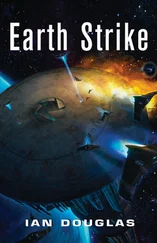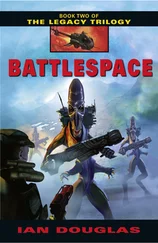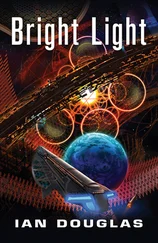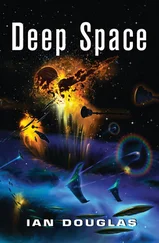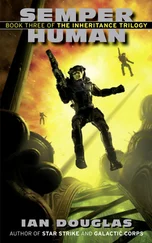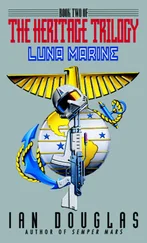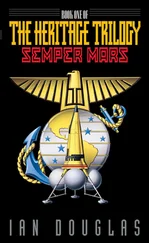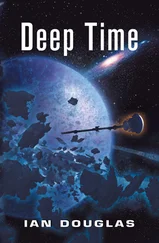But things get uglier when it comes to our pre-Protocol colonies. There are a lot of them out there, scattered across the sky from Sagittarius to Orion. The earliest was Chiron, of course, at Alpha Centauri A IV, founded in 2109. They’re all close enough to Earth to have signed the Protocol shortly after it was written, but there are plenty of colonies out there that for one reason or another have nothing to do with Earth or the Commonwealth. Many of them we don’t even have listed, and if we don’t know they exist, we can’t police them.
But if they were established before the year 2194, they probably still have navigational coordinates for Earth somewhere in their computer network. And someone with the technology to figure out how our computers work, sooner or later, would break the code and they might come hunting for us.
Our only recourse in that case was to go looking for them. If we could contact them and get them to agree to abide by the Protocol, great.
But if they didn’t … well, as Lewis had so eloquently put it, Send in the Marines .
“Now hear this, now hear this,” a voice said from the squad bay’s intercom speaker. “All hands prepare for one gravity acceleration in ten minutes, repeat, ten minutes. Secure all loose gear and reconfigure hab module spaces. That is all.”
“That was fast,” Dubois said.
“Yeah, but where the hell are we going?” I wanted to know. I looked at Lewis. “Your friend have any word on that?”
“Actually,” she said, “from what he said, hell is a pretty good description.”
In fact, though, our destination turned out to be Earth.
Most of the hab space on board an attack transport like the Clymer is dedicated to living space. She carries 1,300 Marines besides her normal complement of 210 officers and crew, and all of that humanity is packed into the rotating ring around her central spine, along with the galleys and mess halls, sick bay, lab spaces, rec and VR bays, life-support nanufactories, and gear lockers.
They didn’t tell us, of course. After doing a quick check to make sure anything loose was tied down or put away—Doobie’s hooch went into a refrigerated storage tank in an equipment locker forward—we strapped ourselves standing against the acceleration couches growing out of the aft bulkhead. Ten minutes later, we felt the hab wheel spinning down, and for a few moments we were in microgravity. I could hear a Marine down the line being noisily sick—there’s always at least one—but I stayed put until the Clymer lit her main torch.
There was an odd moment of disorientation, because where “down” had been along the curving outer floor of the hab wheel, now it was toward the aft bulkhead. The bulkhead had become the deck, and instead of standing up against our acceleration couches, now we were lying in them flat. The viewall was reprogrammed to show on what had been the deck. Under Plottel Drive, we were accelerating at a steady one gravity, but “down” was now aft , not out toward the rim of the wheel.
They let us get up, then, and we spent the next hour learning to walk again. We’d been at .38 Gs for two weeks.
I was half expecting Alcubierre Drive to kick in at any time, but hour followed hour and we continued our steady acceleration. Thirty-four hours later we were ordered to the couches once more, and again there was a brief period of microgravity as the Clymer ponderously turned end for end.
That gave us an idea of where we were headed, though. There’d still been a good chance that we were headed for Europa, as originally planned. At the moment, however, Jupiter and its moons were a good six astronomical units from Mars—call it 900 million kilometers. Accelerate at one gravity halfway from Mars to Europa, and we’d have reached the turnover point in something over forty-two hours. A thirty-four-hour turnover—I ran the numbers through my Cerebral Data Feed in-head processors a second time to be sure—meant we’d covered half the current distance to Earth.
Which meant we were on our way home, to Starport One.
Once we were backing down, thirty hours out from Earth, though, we received a download over the shipnet on a planet none of us had ever heard of.
Download
Commonwealth Planetary Ephemeris
Entry: Gliese 581 IV
“Bloodstar”
Star: Gliese 581, Bloodstar, Hell’s Star
Type M3V
M= .31 Sol; R= 0.29 Sol; L= .013 Sol; T= 3480 oK
Coordinates: RA 15 h19 m26 s; Dec -07 o43’ 20”; D = 20.3 ly
Planet: Gliese 581 IV
Name: Gliese 581 IV, Gliese 581 g, Bloodworld, Salvation, Midgard
Type: Terrestrial/rocky; “superearth”
Mean orbital radius: 0.14601 AU; Orbital period: 36 d13 h29 m17 s
Inclination: 0.0 o; Rotational period: 36 d13.56 h(tide-locked with primary)
Mass: 2.488 x 10 28g = 4.17 Earth; Equatorial Diameter:28,444 km = 2.3 Earth
Mean planetary density: 5.372 g/cc = .973 Earth
Surface Gravity: 1.85 G
Surface temperature range: ~ -60 oC [Nightside] to 50 oC [Dayside]
Surface atmospheric pressure: ~152 x 10 3kPa [1.52 Earth average]
Percentage atmospheric composition: O 219.6, N 275.5, Ne 1.15, Ar 0.58, CO 1.42; CO 21.01, SO 20.69; others<500 ppm
Age: 8.3 billion years
Biology: C, N, H, Na, S 8, O, Br, H 2O; mobile photolithoautotrophs in oxygenating atmosphere symbiotic with sessile chemoorganoheterotrophs and chemosynthetic lithovores in librational twilight zones.
Human Presence: The Salvation of Man colony established in 2181 in the west planetary librational zone. Salvation was founded by a Rejectionist offshoot of the Neoessene Messianist Temple as a literal purgatory for the cleansing of human sin. There has been no contact with the colony since its founding.
“Jesus Christ!” Lance Corporal Ron Kukowicz said, shaking his head as he got up out of his download couch. “Another bunch of fucking God-shouters.”
“Shit. You have something against God, Kook?” Sergeant Joy Leighton said, sneering.
“Not with God,” Kukowicz replied. “Just with God’s more fervent followers.”
“The download said they’re Rejectionists,” I pointed out. “Probably a bunch of aging neo-Luddites. No artificial lights. No AI. No nanufactories. No weapons. That’s about as harmless as you can get.”
“Don’t count on that harmless thing, Doc,” Staff Sergeant Larrold Thomason said. “If they’re living there they’ve got technology. And they know how to use it.”
“Yeah,” Private Gutierrez said. “You can tell ’cause they’re still alive!”
Thomason had a point. The planet variously called Salvation and Hell was a thoroughly nasty place, hot as blazes and with air that would poison you if you went outside without a mask.
We’d been lying inside our rack-tubes as we took the download feed—“racked out” as military slang puts it. That allowed for full immersion; the virtual reality feed that had come with the ephemeris data suggested that the numbers didn’t begin to do justice to the place. The recordings had been made by the colonizing expedition sixty-four years ago, so the only surface structures we’d seen had been some temporary habitat domes raised on a parched and rocky plateau. Bloodstar, the local sun, was a red hemisphere peeking above the horizon, swollen and red, with an apparent diameter over three times that of Sol seen from Earth. Everything was tinged with red—the sky, the clouds, and an oily-looking sea surging at the base of the plateau cliffs.
Читать дальше


